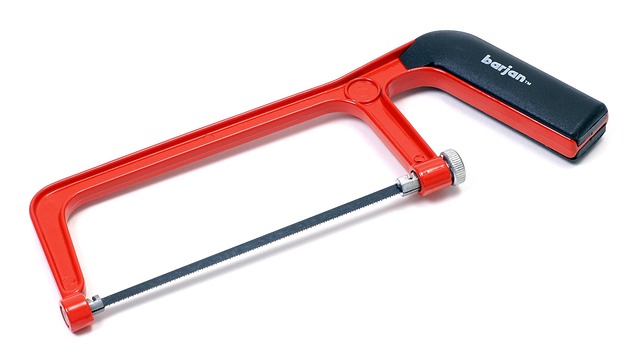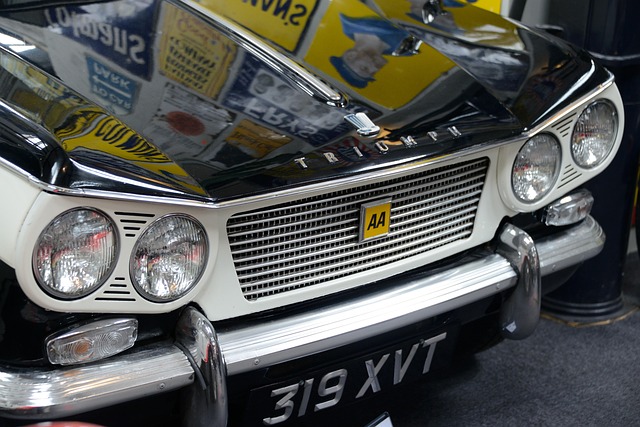Uncovering Dent Repair Cost Transparency: A Comprehensive Guide
Understanding dent repair costs requires analyzing factors like dent size, vehicle type, and locatio…….
In the realm of automotive care, dent repair stands as a critical service, playing a pivotal role in restoring vehicles to their pre-damaged condition. The cost associated with this process is a significant consideration for both consumers and businesses alike, influencing decisions related to vehicle maintenance and repair. This comprehensive article aims to unravel the intricate web of dent repair cost, offering valuable insights into its determination, global impact, and future trajectory. By exploring various facets, from economic implications to technological innovations, readers will gain an in-depth understanding of this essential aspect of the automotive industry.
Definition: Dent repair cost refers to the financial outlay involved in repairing dents or dings on vehicles, encompassing a range of techniques from minor fixes to complex body work. It is a critical component of the automotive aftercare market, ensuring vehicles maintain their aesthetic appeal and structural integrity.
Core Components: The cost structure of dent repair is multifaceted, including:
Labor Charges: This covers the skills and time invested by technicians in repairing dents, varying based on the complexity and size of the damage.
Material Costs: Repairs require specialized tools, paints, and other materials, whose prices fluctuate depending on brand and quality.
Overhead Expenses: Shop owners factor in rent, utilities, insurance, and other operational costs, which impact the overall repair price.
Historical Context: The concept of dent repair has evolved over time, from traditional methods using hammers and suction cups to modern, advanced techniques like paintless dent removal (PDR). Historically, cost fluctuations have been influenced by factors such as labor rates, material availability, and technological advancements.
Dent repair cost exhibits significant global variations, shaped by local economic conditions, cultural preferences, and regulatory frameworks. Here’s a snapshot of different regions:
North America: Known for its advanced automotive industry, the US and Canada offer competitive dent repair services, with costs influenced by robust consumer protection laws and high labor standards.
Europe: Strict environmental and safety regulations drive innovation in dent repair across Europe, leading to diverse pricing models. Countries like Germany are renowned for their precision and quality work.
Asia-Pacific: Rapidly growing automotive markets, such as China and India, present unique challenges and cost structures. Local businesses often adapt traditional methods to meet the high demand at competitive prices.
Latin America: Economic disparities across Latin American nations result in varying repair costs, with some countries adopting more affordable, community-based repair models.
The dent repair cost market is a dynamic segment within the broader automotive aftercare industry, influenced by several economic factors:
| Factor | Impact |
|---|---|
| Market Demand: Fluctuates with vehicle ownership rates and local consumer preferences for vehicle aesthetics. | |
| Material Prices: Global supply chains impact the cost of raw materials, directly affecting repair expenses. | |
| Labor Market: Skilled labor shortages or surpluses can drive up or lower labor costs, respectively. | |
| Competition: Intense competition among service providers may lead to price wars, impacting profitability. | |
| Regulatory Compliance: Adherence to safety and environmental standards increases operational costs for businesses. |
Technological innovations have significantly reduced dent repair cost and improved efficiency:
Paintless Dent Removal (PDR): This non-invasive technique uses specialized tools to press dents back into place, eliminating the need for paint repairs. PDR is faster, cheaper, and environmentally friendly.
Robotica and AI: Automated systems assist in precision dent removal, reducing manual labor requirements and improving consistency. Artificial intelligence algorithms can even predict repair outcomes with remarkable accuracy.
Advanced Materials: Newer materials, such as lightweight composites, offer cost-effective alternatives to traditional metal panels, reducing material expenses.
Government policies and regulations play a crucial role in the dent repair industry:
Consumer Protection Laws: Ensure fair pricing and service quality, mandating transparent pricing structures and standardized repair procedures.
Environmental Standards: Stricter emission norms drive the adoption of eco-friendly materials and processes, impacting cost structures.
Safety Regulations: Enhanced safety standards require advanced training for technicians and adherence to strict protocol, influencing labor costs.
The dent repair industry faces several challenges that impact both service quality and cost:
Skill Shortage: The demand for skilled technicians often exceeds supply, leading to higher labor costs and potential service delays. Addressing this through training programs and educational initiatives can ensure a robust workforce.
Counterfeit Parts: The availability of low-quality, counterfeit materials at reduced prices tempts cost-conscious consumers but compromises vehicle repair quality. Stricter enforcement of intellectual property rights is essential.
Price Transparency: Lack of transparency in pricing structures may deter consumers from seeking repairs. Clear, itemized estimates and educational resources can empower customers to make informed choices.
Case Study 1: GreenCar Repair, USA
GreenCar, a pioneering dent repair shop, implemented an eco-friendly business model, utilizing PDR techniques and sustainable materials. Their focus on customer education and transparent pricing attracted a loyal client base, resulting in increased market share and positive environmental impact.
Case Study 2: AutoFix Pro, Europe
AutoFix Pro, a European chain, adopted advanced AI-driven diagnostics to streamline repairs. This technology reduced labor errors and enabled faster turnaround times, leading to higher customer satisfaction and cost savings for the company.
The dent repair cost landscape is poised for significant growth and evolution:
Digital Transformation: Online booking platforms, virtual consultations, and augmented reality (AR) tools will enhance customer engagement and accessibility.
Sustainable Practices: The industry will continue to embrace eco-friendly materials and processes, driven by consumer demand and regulatory pressures.
Personalized Services: Customized repair solutions catering to individual vehicle preferences and lifestyle needs will gain traction.
Remote Repair Services: With advancements in robotics, remote repair capabilities could become a reality, offering convenience and cost savings.
Dent repair cost is not merely a financial consideration but a critical factor influencing vehicle ownership experiences and the overall health of the automotive industry. As technology advances and global trends evolve, understanding and navigating this landscape will be essential for businesses and consumers alike. By embracing innovation, prioritizing sustainability, and fostering transparency, the dent repair industry can continue to deliver high-quality services at competitive costs, ensuring vehicles remain in top condition worldwide.
Q: How do I know if a dent repair is worth it?
A: The decision depends on various factors, including the size and location of the dent, your vehicle’s age, and your budget. Minor dents may be best left to professionals for repair, while larger ones could impact structural integrity.
Q: Are there ways to reduce dent repair costs?
A: Yes! Consider regular vehicle maintenance to prevent dents, use protective coatings, and compare prices from multiple shops. Online coupons and loyalty programs can also offer savings.
Q: Can I learn dent repair techniques for DIY repairs?
A: Absolutely! Many resources, including online tutorials and local workshops, teach PDR and basic repair skills. However, complex jobs may require professional tools and expertise.
Q: How do environmental regulations affect dent repair cost?
A: Stricter regulations promote the use of eco-friendly materials and processes, which can be more costly but also benefit the environment. Businesses must balance these factors to remain competitive.
Q: Will AI replace human technicians in dent repair?
A: While AI assists in diagnostics and estimation, it is unlikely to fully replace human technicians. Human expertise remains crucial for complex repairs, ensuring vehicle safety and quality restoration.

Understanding dent repair costs requires analyzing factors like dent size, vehicle type, and locatio…….

Understanding dent repair costs involves recognizing factors like dent size, location, repair method…….

Understanding dent repair costs is crucial. Paintless dent repair (PDR) is generally less expensive…….

Before negotiating dent repair cost, conduct a thorough inspection of your vehicle with a profession…….

Understanding dent repair cost requires considering damage size, complexity, repair technique, regio…….

Understanding dent repair costs involves considering severity, size, location, vehicle material, lab…….

Understanding Dent Repair Cost:The price of dent repair depends on damage extent (from small cosmeti…….

Understanding dent repair costs involves recognizing that prices differ based on damage extent (from…….

Understanding dent repair cost quotes requires knowing the components: labor and material. Labor inc…….